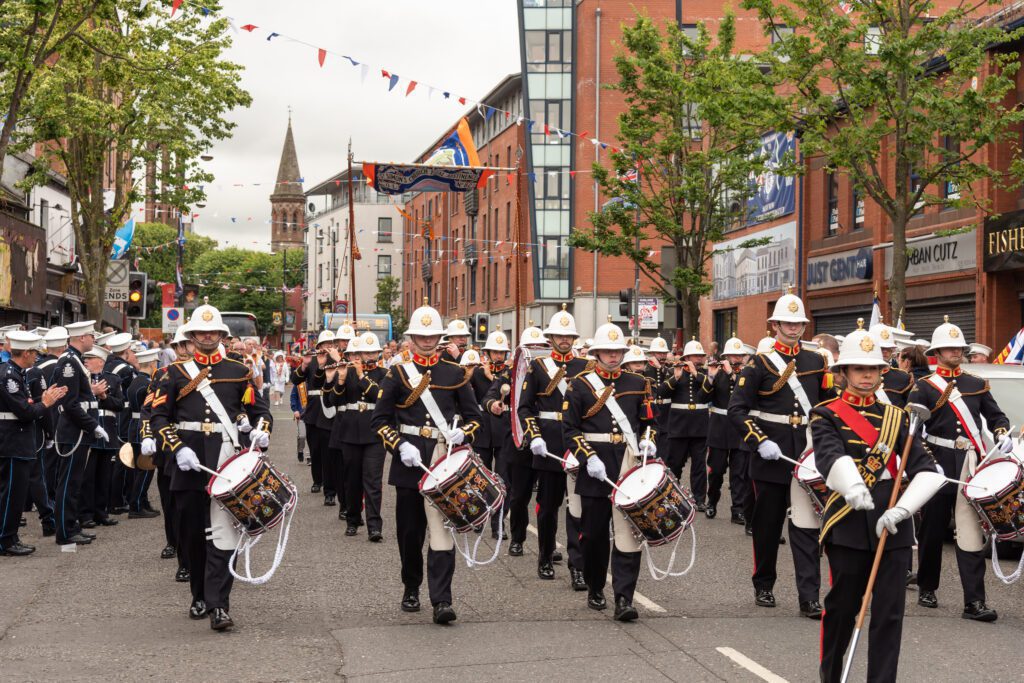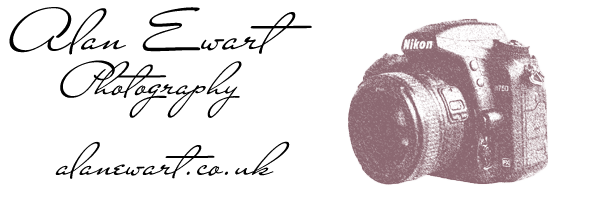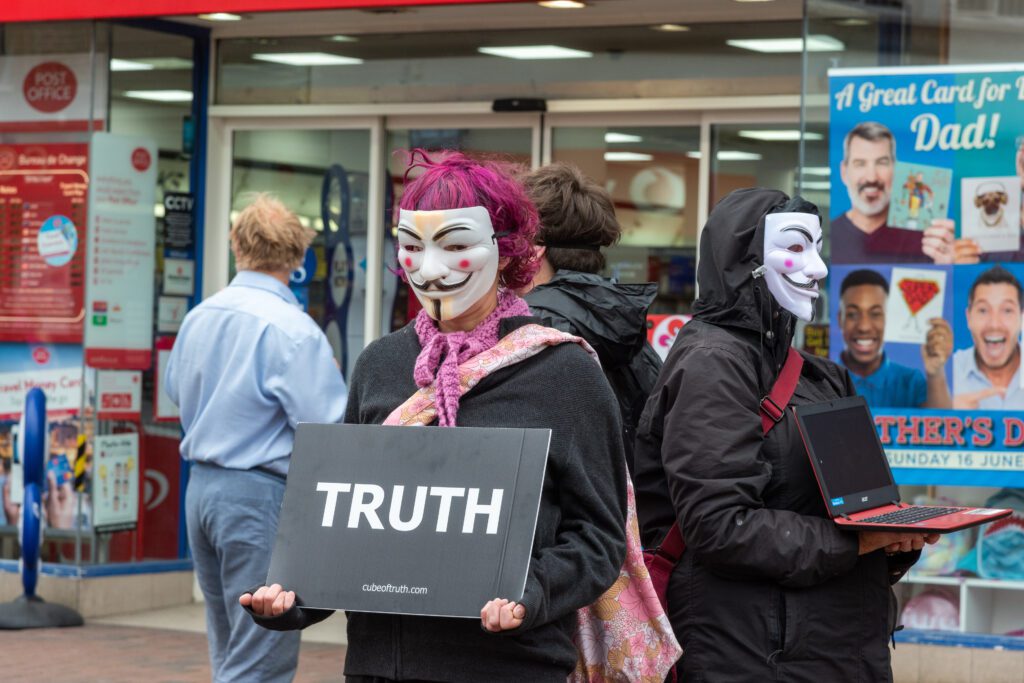What is Documentary Photography? A question that will be answered through a series of articles, for students and photographers, in the coming weeks and months.
The Beginners Guide to Documentary Photography
Documentary photography is without question one of the most enjoyable, powerful, and significant niches in the world of photography. Documentary photography produces the sort of images that don’t just capture and preserve the world around us, they can help to shape it.
If you doubt what I say, I invite you to consider for a moment a famous photograph from the Vietnam war. Nick Ut’s famous image “Napalm Girl” won Ut a Pulitzer prize but it had a much more profound effect on the American psyche.
The disturbing image of a screaming and terrified nine-year-old child horrified the nation as the effects of the war became front-page news.
Anti-war protests increased across America, and support for the war evaporated. It can certainly be argued that documentary photographers, like Nick Ut, hastened the end of the Vietnam war.
The image has since become a symbol for anti-war protests the world over.
You might also reflect on images of the New York skyline before, during and after the 9/11 attack. Those images have a profound effect on everyone who witnessed the terrible events of that day. No one, from first responders to those who watched events unfold through our television screens, will ever forget that day or the effect it had on our emotions.
Documentary photography provides a window into the lives and experiences of others and it reflects, perhaps above all, the human condition. Furthermore, documentary photography has the ability to shape public opinion and bring about social change. As such a documentary photographer is placed under a burden of trust and has the moral obligation to behave in an ethical manner.
Whether you’re a seasoned photographer looking for project ideas, a student photographer researching the genre, or just starting out as a documentary photographer, it’s essential to understand what documentary photography is and how it differs from other types of photography.
University libraries are full of books to aid both academic and visual research and I make no attempt to replicate those resources. Instead, I am to provide a thorough, but more easily digestible and practical guide. I will try to signpost as many opportunities for further reading or research as we go along. I will share my own experiences and even my own failures.
Future articles will look at ways to generate topic ideas for documentary projects. I will discuss the practical difficulties of managing a long-term documentary project, and how you might fund such projects. We’ll also discuss the role of technology, ethical considerations, and the relationship between documentary photography and photojournalism.
I will introduce you to some of my favorite documentary photographers and finally, we’ll touch on the future of documentary photography and what it may hold for photographers.
Documentary photography is a big subject, it’s far too big to cover in any detail in a single article. The topics listed below give a detailed idea as to how the series will develop in the coming weeks and months. This isn’t a definitive list and the topics are not listed in any particular order.
Ensure you see the whole documentary photography series
Make sure that you don’t miss any of the articles in this series about documentary photography.
Simply add your name and email address to the form and I will notify you as each new article is released.
You can be sure that your data is secure and will not be shared with any third parties.
The next three articles in the series will focus on “finding topics for a documentary photography project,” “Managing your project,” and “Ethical considerations in documentary photography.” Don’t miss them, make sure you sign up to be notified when they are released in the coming days.
Finding topics for a documentary photography project
Like most things in life, the most difficult part can be taking the first step. For many creative people sitting down with a blank piece of paper to sketch out an idea for a project is the stuff of nightmares.
I would much rather be out taking photographs than sitting at my computer planning a project. Ironically, I am a fully qualified project manager and have managed some pretty huge projects in the past.

My aim is to help you to find projects that will excite you, in a way that you will find easy to follow. I will talk about researching the viability and wider interest in potential topic areas, how to discount bad ideas, and how to combine topic ideas to make a coherent project.
Managing a documentary photography project
I will use project management approaches to help you navigate your project all the way from initial idea to completion, publication, and exhibition. Fear not, I don’t want to turn you into a “project manager,” but I do want you to be able to manage your own project.
We will discuss identifying and researching the topic, finding volunteers, and finding financial or practical assistance. We will talk about the pitfalls of complex photography projects, and how to avoid or recover from them when things go wrong.
I will explain a simple formulaic approach, and if you follow it you will find it much easier to keep on track. It will keep you on the right side of the law and will ensure that your work meets high ethical standards.
Ethical considerations in documentary photography
As mentioned above, documentary photography often deals with people and with the human condition. If you are like me, you may interview your subjects in order to better understand their experiences and how those experiences have shaped them and their life.
Inevitably you will be taken into people’s confidence, sensitive, controversial and sometimes even illegal subjects will be discussed. Participants need to know that they can rely on you to hear their story and present it in an honest, non-prejudicial, and non-judgemental way.
As a result, it’s important for photographers to consider the ethical implications of their work. Issues such as privacy, consent, and fair representation must be taken into account to ensure that the rights of the subjects are protected. We will discuss these issues in depth in a future article.
What to expect as the series develops
The first three articles in the series are designed to get you started in documentary photography. They provide a foundation that will stand photographers who are setting out in the genre in good stead. The idea is to provide solid foundations that will enable you to build your own projects with confidence, avoiding the pitfalls, and establishing good practice from the beginning.
I use my experience from decades of teaching adults, studying photography at Arts University Bournemouth, having mentoring relationships with successful documentary photographers, and of course from my own experience of designing and managing documentary photography projects.
Here is a very brief synopsis of topics we will tackle in the future. I believe that these topics will help you to build a firm knowledge and understanding of documentary photography. If you notice any gaps in essential subject areas please let me know. I will happily fill the gap. Alternatively, if you are looking for the opportunity to guest post, I will happily provide a profile and backlink to your site. If you are not sure of the benefits of guest posting have a read of this article.
Definition and history of documentary photography

Documentary photography refers to the practice of capturing real-life events, people, and places in a straightforward and objective manner. This type of photography has its roots in the early days of photography when photographers began using their cameras to document the world around them. Today, documentary photography continues to play a vital role in visual storytelling and social commentary.
The work of photographers like Henri Cartier-Bresson and Don McCullin has made a lasting impact on the field of documentary photography and their contribution to the history of the genre simply cannot be ignored.
We can use the work of these famous photographic artists to explain the history and development of documentary photography. This is also useful in helping us to understand the relationships between documentary photography, street photography, reportage photography, and photojournalism.
Exploring the work of both historical and contemporary documentary photographers will allow us to explore the relevance of the genre in the digital world and how it has developed through time. We can discuss how technology impacts ethics and trust across the wide variety of subgenres in the documentary photography niche.
Importance of documentary photography for society and culture
Documentary photography plays a vital role in shaping public opinion and bringing about social change. By capturing real-life events, people, and places, documentary photographers can raise awareness about important issues and provide a voice for those who may not have one. This type of photography also helps to preserve our cultural heritage and provides a historical record of the world around us.
There is power in images. Spend a moment thinking about the charity advertisements you see on television. Pictures of hungry children, living in poverty or affected by famine, manipulate our emotions, encouraging us to make a donation.
Advertisers use images to sell goods to people, and those images are designed to evoke an emotional reaction. The power of the image is based in the old fallacy that “the camera doesn’t lie.” We will explore why that fallacy exists, especially in a digital world where technology has had a profound impact on the world of documentary photography.
Advances in cameras, software, and the internet have made it easier than ever for photographers to capture and share their images with the world. Documentary photography has the power to influence, and with that power comes a great responsibility, the responsibility to portray the truth and to behave in a way that is acceptable in the digital age.
If we accept that documentary photography has the potential to influence the thinking of the public and policymakers then the documentary photographer has the responsibility to present information in a fair and impartial way.
Documentary images can play an important role in the representation of marginalized communities.
By capturing the experiences and perspectives of those who are often overlooked or underrepresented, photographers can help to challenge dominant narratives and promote greater understanding and empathy.

Types of documentary photography
There are several different types of documentary photography, including social, political, and historical. Social documentary photography focuses on capturing the everyday lives of people and communities. Political documentary photography often addresses social and political issues, such as war, poverty, and human rights. Historical documentary photography captures events and places from the past and is often used to preserve historical events for future generations.
As the series progresses we will explore how we define each type of documentary photography project, and explain how we might approach planning and executing a project.
We will ask whether niches like street or wedding photography can be defined as documentary photography.
Art as activism
Documentary photography has long been associated with activism, as photographers use their cameras to bring attention to important social and political issues. By documenting the experiences of marginalized communities and those affected by injustice, photographers can shed light on the human cost of political and social issues and work to bring about change.
Objectivity is a key principle of documentary photography, but it can be challenging to maintain in practice. Photographers must navigate the line between capturing the truth and influencing the events they are documenting. They must also be mindful of their own biases and strive to present a balanced and nuanced perspective.
Of course, that doesn’t mean that documentary photographers are always neutral. Many photographers use documentary project topics to highlight issues that they are passionate about. We will explore when and whether a photographers personal bias is acceptable in a documentary project.
The relationship between documentary and other photography genres
It should be obvious that documentary does not exist in a vacuum. There are crossovers, for example, a documentary project might include elements of portraiture, family, street, landscape, architectural, or even art photography. Future articles will highlight where these photographic genres have been used in documentary projects.
Conclusion: The end of the beginning
Documentary photography is a powerful and important form of visual storytelling. Whether capturing real-life events, people, and places or exploring complex social and political issues, documentary photographers use their cameras to shed light on the world around us and bring about change.
By understanding the definition, history, and techniques of documentary photography, photographers can make the most of this art form and create images that have a lasting impact.
This series of articles aims to increase understanding of this style of photographic art and to encourage photographers to document the world through the medium of their lens.
Be sure to check out the next article in this documentary photography series when we will discuss how to find interesting documentary photography topics.




